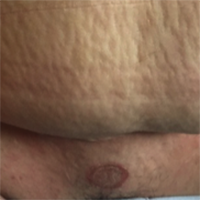An unusual case of Lyme borreliosis: can we miss it?
 Smart Citations
Smart CitationsSee how this article has been cited at scite.ai
scite shows how a scientific paper has been cited by providing the context of the citation, a classification describing whether it supports, mentions, or contrasts the cited claim, and a label indicating in which section the citation was made.
Lyme borreliosis is an infective disease that is usually transmitted to humans via biting by bacteria-infected Ixodes tick. The disease is multisystemic and the affected organs are the skin (Erythema migrans), nervous system, eyes, heart and joints. Borrelia burgdorferi is the bacterium that causes borreliosis and the hosts are rodents of the genus Apodemus. In the Balkan region, Ixodes ricinus is the most representative vector. A bite from an infected insect is the most common mode of transmitting Borrelia; however, transplacental transmission has also been documented. Pathogenesis of the disease consists of both direct and indirect mechanisms of immunological reactions which result in the production of IgM antibodies to Borrelia in the first 3-6 weeks, and production of IgG class after 6 weeks. Many skin diseases and skin symptoms mimicking Lyme borreliosis, such as dermatomycosis, erysipelas, and undefined hyperpigmentation must be elaborated and considered for borreliosis, as skin symptoms of borreliosis can imitate many of them.





 https://doi.org/10.4081/dr.2019.8021
https://doi.org/10.4081/dr.2019.8021





